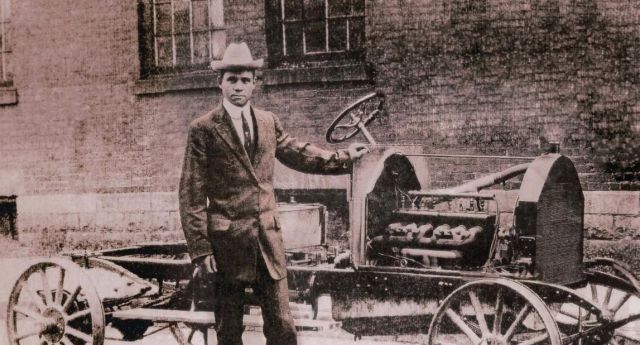Canada is celebrating it’s 150th birthday this year, marking not only its incredible growth but also its innovation, as Canada is considered to be one of the most innovative countries in the world! Through the invention and adoption of technology, Canada has become an economic leader and continues to become greater as a nation every single year. As Canadians prepare to celebrate the 150th anniversary of the Dominion of Canada, we decided to dive into the history of the commercial trucking industry, and how TRAFFIX has played a role in growing the sector over the past 39 years.
The Early Years
For centuries, individuals have been trading and handling products and goods; establishing relations with one another and increasing the economy of that time. The Hudson Bay Company, one of the earliest trading companies working within Canada that focused on the distribution of furs, was founded in 1670 and played a crucial role in the establishment of trade. When The Hudson Bay Company merged with the North West Company in 1821, however, trade relations expanded across Canada further allowing the circulation of goods. Although commerce and distribution had been a part of Canada’s identity, it was not until 1885 that an extensive transportation system was established. The completion of the Canadian Pacific Railway, requested by British Columbia as a requirement in joining the Dominion of Canada, allowed for a transcontinental railway to span across Canada and increase the transportation of goods.
During the 1900’s Canadians were instrumental in the production of motorized vehicles, but it was not until World War II, however, that there was an influx in the manufacturing of trucks, marking the beginning of the commercial transportation system. Trucks became relied upon to transport goods and were integral to the war effort. After World War II, the commercial trucking industry continued to grow and flourish with the development of the Trans-Canada Highway, which was proposed by Parliament in 1949 and completed in 1971; connecting Newfoundland to British Columbia. As the trucking industry grew, the Privy Council in 1954 established regulations to ensure that the sector remained controlled as shipments expanded across provinces and international borders. All jurisdictions were put back on the provinces, however, causing laws to differ within specific provinces, but remain consistent with regards to shipments transported across the country.
Ontario Trucking
Ontario is home to some of the greatest transportation systems in Canada due to the circulation of goods amongst urban centers and its proximity to the United States. Trucking in Ontario began, however, in 1898 when the Robert Simpson Company first utilized an electric- powered truck to deliver products to its customers instead of delivering goods by wagon. As trucking grew, the Automative Transportation Association was established in 1926, to represent 200 commercial vehicles and work to preserve the future of this industry in Ontario. It was later established as the Ontario Trucking Association, that we know of today. Shortly after, Leonard S. Meiler made history when he went on to receive the first commercial truck driver’s license to be issued in Ontario. Over the years, the development of roads and highways across Ontario continued, further moving the transportation industry forward. It was not until the early 1970’s, however, that the Department of Highways and the Department of Transportation joined to later form the Ministry of Transportation and Communications.
TRAFFIX Was Born
In 1979 Chuck Snow established TRAFFIX after leaving his family’s flower import business, as he wanted to solidify his place within the transportation industry. During this time, the trucking industry was highly regulated but was incredibly inefficient causing companies and individuals to pay additional expenses that could be avoided. From the onset, our goal was to provide a different level of service in the industry. We did so by working to change Canada’s trucking regulations, as it would benefit the entire industry as a whole. TRAFFIX played a significant role in the deregulation of the trucking industry as we circumvented current regulations of the time to help companies continue to ship items across the country despite the licenses that regulated the shipment of products. Shortly after, TRAFFIX established itself as a load broker, helping companies match loads with drivers to ensure that trucks were always transporting products, no matter the location. TRAFFIX, along with several other businesses flourished, however, with the establishment of the North American Free Trade Agreement, as we were called upon to deliver goods across North America, which we still do today.
Over the years, TRAFFIX has expanded to be one of the key logistics companies in Ontario. We are the proud operators of high-quality tractors and trailers and offer perishable, dry, project cargo, air, and intermodal freight services. Our incredible team of individuals, who are passionate about growing the transportation industry, work ceaselessly to contribute to the shipment of products and goods, making TRAFFIX what it is today.
The Canadian trucking industry has been integral to the growth of our country and will continue to be for years to come. From the early beginnings of trade within Canada to our international trade partners of today, the commercial trucking industry continues to move our country forward and works to solidify our stance in the global economy.



